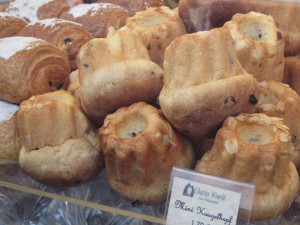http://yookyoungyong.com//12345.php After cruising overnight, we docked in Strasbourg around 6 AM, just a little ahead of schedule. When dawn arrived, there was a hint of promise that the sun would be out today. Near the River Queen, our glass-top canal boat picked us up to take us a cruise through Strasbourg’s canals with our guide, Giselle, filling us in on the local scene.
Minas de Matahambre Like so many other towns and cities on the Rhine, Strasbourg was a Roman military fort, even though it is actually two miles from the river. In the 5th century, Atilla the Hun and his army took the city from the Romans. Then, in the 1670’s, Louis XIV annexed the area as part of France. In 1871, after the Franco-Prussian War, it became part of Germany again. It reverted back to France after WWI. In 1941, Germany took control again. In 1945, after an American bombing, LeClerc liberated the city and, today, it is still part of France. All of these transfers back and forth lend Strasbourg a dual personality: French + German. The European Parliament meets here one week a month, and it is also the home of the Council of Europe, and the international Human Rights Institute.
Our route in the glass-topped water taxi took us from the industrial area where the River Queen docked, through a residential area where the banks were lined with fisherman, past the modern office buildings that make up the European Parliament along the Ill River. Soon we passed under the Pont J.F. Kennedy, with the US Consulate at one end of the bridge, and St Paul’s Church at the tip of an island.
Just to our starboard was the historic town center, the island that makes up original Strasbourg, with its original half-timbered houses, its subsequent building structures, it’s many bridges, and two locks. We passed La Petite France, a picturesque neighborhood of cobblestone streets, half-timbered houses, flower filled window boxes, and even an old mill or two. Despite its current quaint look, La Petite France has a somewhat sordid history. While in German control in the 15th century, a horrible disease struck that guaranteed death; the Germans called it the French Disease. It was actually syphillis. So they built a hospital, separated by water from the rest of Strasbourg, for those doomed to die and called it La Petite France.
While the French National Anthem is titled La Marseillaise, implying it was written in Marseille, it was actually written here in Strasbourg by Claude-Joseph Rouget in 1792. It was adopted as the national anthem of the Republic of France in 1795 by the French National Convention. Its name comes from the fact that it was first sung by volunteers from Marseille.
We passed the Ponts-Couverts, covered bridges linked by medieval watchtowers. We were trapped in our second lock for quite some time! Though the lock was automatic, the gates behind us would not close, so the lock could operate. The First Mate contacted the lockkeeper from the manual lock who ran across the island to help. He found a wine bottle preventing the gates from closing. Only in France!
Strasbourg is home to universities, one of which has a restaurant for students, who may purchase a four course meal for 3 euros. Of course, we were not invited. It is also home to the Institute of Administrative Arts, from which Francois Hollande graduated, and is the premier school for public administration – open only to the most advanced students.
Our water taxi dropped us off, here in City center, and we made our way to Notre Dame Cathedral, a medieval masterpiece, built between 1176 and 1439. Notre Dame’s spire stands 469 feet tall – and today against a blue sky. The stained glass windows of the cathedral were saved from the ravages of war by storing them in salt mines. The cathedral also houses a fabulous astronomical clock that strikes every quarter hour with figures moving at the top. We visited the cathedral’s interior after lunch, since Mass was taking place when we arrived. We strolled the old town, visited a harvest festival in the Place Commerciale, where we were intrigued by a cheese melting device. We also peeked at a stand with baked goods, including a Kouglehopf.
Taking Paul Heinz’ advice we found Le Tire-Bouchon, a bistro where we stopped for a lunch of onion tart, foie gras, and a pichet of Alsatian Pinot Noir.
After lunch, we strolled around the perimeter of the main island, opposite the way we had come by water taxi, snapping photos and made our way back to the pickup point for our rid
e back to the River Queen. Tonight’s agenda includes French chansons, our daily talk with the cruise manager, a farewell cocktail, and our farewell gala dinner. 7:30PM is castoff time and sailing for Breisach, Germany.During the entertainment Shoe was selected to perform:


